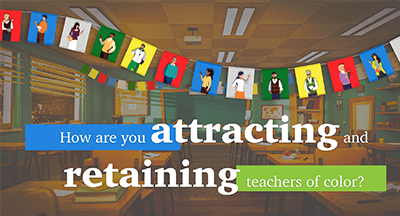
With good reason, the spotlight in education often shines on classrooms. Students and teachers make up the reason we’re all involved in education, so it’s natural to explain school systems using that cornerstone. After all, everyone in a school district is there to serve students—it’s the one thing we can all agree on.
Does your community understand what goes on in the district offices to create a framework for student success?
Our language
We know telling stories works, but are you speaking your audience’s language? Or at the very least teaching them the intricacies of education speak?Sometimes, as experts ourselves, we forget to translate industry jargon. Education isn’t immune, even though we tend to think everyone is familiar enough with schools to catch on. Get in the habit of adding a quick definition or even a glossary to your stories.
Storytelling is important at all levels, not just the classroom tales with cheerful children. District administrators can share their work and how it relates to the district mission (which is probably something about preparing children for success), and data visualizations help communicate numbers, stats, and achievement in an engaging way.
Our co-stars and audiences
Families are a main target for school engagement—after all, it’s hard enough to engage parents in student learning. However, outreach also extends to the community, neighbors, and local businesses—even fellow education institutions, including post-secondary education.This is where a cohesive brand comes in. A well-crafted school brand not only tells the story of your school culture but also gives the audience a clear, consistent picture of what school is like in your district. Schools are loosely competing for enrollment, but that’s no reason to isolate from regional school districts. It’s fun to play up “rivalries” on the field, but when it comes to creating a safe environment for kids to thrive, having every neighbor in your corner is crucial.
Our rules and terms
Storytelling requires consent. As children are unable to give consent, districts rely on parents to do so for them. Many districts have made this permission discussion a component of enrollment, and since every family’s preferences are different, policies and practices must be quite clear. It helps to explain the rationale, goals, and use of the stories and images the school intends to use.Strike a balance between openness and boundaries with families. Invite them to listen and help create the stories they see about their children’s school district. Start with a clear vision in mind, craft policy that is respectful and reasonable, and start telling stories.
The value of telling your story well is in the retelling from community members. As more families move around, your story can draw new students and new staff into your district. Make sure it’s being told the way you meant it to be told.
Follow-up resource: School comms pros share their stories
Listen in as two school communication pros share stories from their different districts.WHAT'S NEXT FOR YOUR EDTECH? The right combo of tools & support retains staff and serves students better. We'd love to help. Visit skyward.com/get-started to learn more.

|
Erin Werra Blogger, Researcher, and Edvocate |
Erin Werra is a content writer and strategist at Skyward’s Advancing K12 blog. Her writing about K12 edtech, data, security, social-emotional learning, and leadership has appeared in THE Journal, District Administration, eSchool News, and more. She enjoys puzzling over details to make K12 edtech info accessible for all. Outside of edtech, she’s waxing poetic about motherhood, personality traits, and self-growth.




